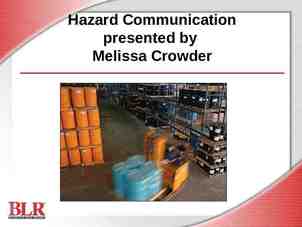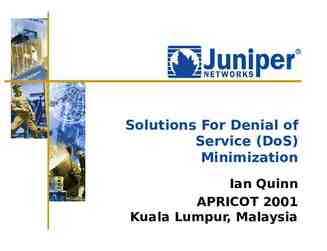AST San Jose Lab: IEEE 802.11s Mesh Network
25 Slides343.50 KB
AST San Jose Lab: IEEE 802.11s Mesh Network [email protected] US 408-467-8436 Confidential AST - San Jose Lab - http://goldrake.snj.st.com
Useful URLs www.ieee802.org/11 – IEEE 802.11 WLAN main site with schedules, standards, announcements, contacts, etc. – Documents older than 11-03-657. www.802wirelessworld.com – – – – Confidential Need e-mail address and a password to join Attendance, membership status, etc. Documents newer than 11-03-656. e-mail me to get on the ‘ieee-stds-11’ reflector. AST - San Jose Lab - http://goldrake.snj.st.com
802.11s –PAR To develop an IEEE 802.11 Extended Service Set (ESS) Mesh with an IEEE 802.11 Wireless Distribution System (WDS) using the IEEE 802.11 MAC/PHY layers that supports both broadcast/multicast and unicast delivery over self-configuring multi-hop topologies. To extend the IEEE 802.11 MAC. No physical layer is included. To provide a protocol for auto-configuring paths between APs over self-configuring multi-hop topologies in a WDS to support both broadcast/multicast and unicast traffic in an ESS Mesh using the four-address frame format or an extension. A target configuration is up to 32 devices participating as AP forwarders in the ESS Mesh. To utilize IEEE 802.11i security mechanisms, or an extension thereof, for the purpose of securing an ESS Mesh. 802.11s Project Authorization Request (PAR) Doc #11-04-54r2 Confidential AST - San Jose Lab - http://goldrake.snj.st.com
802.11s – Example of Mesh Network Internet Internet Mesh Point Mesh Portal Mesh Point Mesh Point STA BSS Confidential Mesh Network Mesh AP Mesh AP STA Mesh Portal STA STA STA BSS AST - San Jose Lab - http://goldrake.snj.st.com
802.11s –Functional Requirements and Scope (2) Mesh Topology Learning, Routing and Forwarding Mesh Security Mesh Measurement Mesh Discovery and Association Mesh Medium Access Coordination Compatibility to 802.11 Service Interworking Mesh Configuration and Management Confidential AST - San Jose Lab - http://goldrake.snj.st.com
802.11s –Functional Requirements and Scope(1) High-level view on the system functions interactions Mesh Interworking Mesh Routing & Forwarding Mesh Security 802.11 Service Integration Confidential Mesh Medium Access Coordination & Flow Control Mesh Measurement Auto Discovery & Topology Learning Mesh RF Resource Ctrl & Management AST - San Jose Lab - http://goldrake.snj.st.com
802.11s—Functional Requirements and Scope (3) Mesh Topology Learning, Routing and Forwarding : QOS Routing – On-demand routing/proactive routing. – Topology-based protocol/distance-vector based protocol. – Uniform protocol/non-uniform protocol. Architecture to support alternative routing protocols Mesh routing in the presence of low-power mesh points Mesh routing with Multiple radio devices Broadcast/multicast/unicast data delivery support Confidential AST - San Jose Lab - http://goldrake.snj.st.com
802.11s—Functional Requirements and Scope (4) Mesh Security : Secure association of Mesh Point Secure data message/management message/routing message Centralized/distributed authentication and key management Extension of 802.11i for mesh Confidential AST - San Jose Lab - http://goldrake.snj.st.com
802.11s—Functional Requirements and Scope (5) Mesh Measurement : Specification of radio-aware metrics for use by mesh network Mesh link/path quality measurements Measurement to support channel selection Measurement to aid STAs in making roaming decision Mesh Discovery and Association : Protocols to allow Mesh Points to discover Mesh Networks Protocols to allow Mesh Points to associate with a Mesh Network Protocols to allow Mesh Points to associate with other Mesh Points within a Mesh Network Confidential AST - San Jose Lab - http://goldrake.snj.st.com
802.11s—Functional Requirements and Scope (6) Mesh Medium Access Coordination : Mitigate performance degradation caused by hidden nodes/exposed nodes Support of admission control Support of congestion control Improve spatial reuse Management of multiple classes of traffic Coordinating channel access across multiple nodes to avoid performance degradation Mesh link communication coordination Confidential AST - San Jose Lab - http://goldrake.snj.st.com
802.11s—Functional Requirements and Scope (7) Compatibility to 802.11Services : Mesh Point DS Services integration Mesh compatibility with STA mobility/roaming Techniques to meet 802.11r system requirement Interworking : Interface with high level protocol Interface with other IEEE 802 LANs Mesh Configuration and Management : Support for managed network management model Support for unmanaged network management model Self-configuration support Information exchange about Capability information of Mesh Points Mesh network channel selection Support for time synchronization Confidential AST - San Jose Lab - http://goldrake.snj.st.com
802.11s –Usage Models (Potential Markets) 1 Residential. – – – – Indoor environment. Mesh point number: 8. Easy Installation. Coexistence with other Mesh networks/BSSs. Office. – Indoor environment. – Mesh point number: 32. – Higher device density and bandwidth requirements as compared with campus networks. – Support unmanaged mode and central managed mode. Campus/Community/Public Access Network. – – – – – Confidential Seamless connectivity over large geographic areas. Mesh point number: 32-100. Provide alternatives to traditional internet access methods. Centralized management. Scalability, automatic reconfiguration and reliability. AST - San Jose Lab - http://goldrake.snj.st.com
802.11s –Usage Models (Potential Markets) 2 Public Safety – – – – – – Semi-permanent infrastructure and Mobile mesh points coexist. Mesh point number: 32. Mostly outdoors. Node mobility. Dynamic variations in radio propagations. Strong requirements of network self-configuration and self-management. Military. – – – – – Confidential Sensitive to energy conservation. Mesh point number: 32. Mostly outdoors. Node mobility. STAs need to become mesh AP temporarily. AST - San Jose Lab - http://goldrake.snj.st.com
802.11s – Key Documents 11-04/54r2 “PAR for IEEE 802.11 ESS Mash” 11-04/56r1 “Five Criteria for IEEE 802.11 ESS Mesh” 11-04/1174r13 “Functional Requirements and Scope” 11-04/1175r10 “Comparison Categories and Informative Checklists” 11-04/662r16 “Usage Models” 11-04/1477r4 “Terms and Definitions for 802.11s” 11-04/1430r12 “Call For Proposal” Confidential AST - San Jose Lab - http://goldrake.snj.st.com
802.11s – Major Deadlines Those wishing to submit a proposal must send the 802.11 TGS Chair a notice of intent to submit at the end of the Friday before the March 2005 Meeting. 11s will allocate some time for the voluntary preliminary presentation of proposals at the March and May 802.11 Meetings. All the proposals will be submitted and presented at the July 2005 meeting of 802.11. Confidential AST - San Jose Lab - http://goldrake.snj.st.com
802.11s – ST Partial Proposal Admission Control Congestion Control Neighbor-list LC-EDCA Confidential AST - San Jose Lab - http://goldrake.snj.st.com
802.11s –Admission Control(1) Admission control is used for real-time traffic. Admission control is done at the destination Mesh Point (MP). – A request message is used to get the available bandwidth of the selected path, and the requested bandwidth. – The destination decides if the request is admitted. – The forwarding information is established when the response message is sent back to the source MP. The available bandwidth equals the difference between the total bandwidth allocated to the real-time traffic and the bandwidth used by the real-time traffic. The bandwidth used by the real-time traffic at any node is measured based on the real-time packets the node detected. To Internet To Internet Mesh Portal Mesh Portal Mesh Point STA Confidential Req Mesh Point Mesh AP Rps STA Req Rps STA Mesh Point Mesh AP STA STA AST - San Jose Lab - http://goldrake.snj.st.com
802.11s –Admission Control(2) The reasons for re-admission control. – Node mobility – False admission. The congested MP randomly selects some admitted traffic and notifies the source MP to request admission again. Mesh To Internet The available bw of MP1: 5Mbps The available bws of other MPs: 10Mbps The bw requested by MAP1:3Mbps The bw requested by MAP2: 4Mbps Rep(6) Req(1) Mesh AP1 STA STA Req(4) Mesh Point1 Rep(7) Mesh Portal2 Mesh Point2 Rep(8) Req(2) Req(3) Rep(5) STA Mesh Point3 Mesh AP2 STA STA MAP1’s request is granted! Confidential To Internet MAP2’s request is granted! Portal1 AST - San Jose Lab - http://goldrake.snj.st.com
802.11s—Congestion Control (1) Actual Scheduling Result when load 700kb/s 674k 449k 238k Rx: Tx: Wasted TX 238k 674k 347k 1020k 687k 235k 450k 697k 899k 1056k 235k 702k 685k 697k Congested nodes Ideal Scheduling, when the network is overloaded 430k 430k 430k 430k Rx: Tx: Confidential 355k e2e throughput 430k 430k 430k 430k 430k 860k 860k 860k 860k 430k 860k 860k 860k 430k AST - San Jose Lab - http://goldrake.snj.st.com e2e throughput
802.11s—Congestion Control (2) .11e Access Category-based congestion control Each MP detects network congestion according to: – Delay. – Queue size. – Packet loss rate. When congestion occurs, random early congestion notification information is sent to the source MP. Source MP polices the packet transmission rate. Confidential AST - San Jose Lab - http://goldrake.snj.st.com
802.11s –Neighbor-list LC-EDCA(1) Two mesh point priorities are used to lower the collision probability – Highest priority (transmit the first frame after a shorter IFS idle medium time) – Low priority (the standard EDCA medium access method is used) A neighbor list is maintained in each STA – Each Mesh point allocates one weight to each of its neighbors The TXOP owner (the highest or low priority mesh point) selects the next highest priority mesh point. This adds robustness and quick recovery in a scenario where packets are lost. Confidential AST - San Jose Lab - http://goldrake.snj.st.com
802.11s –Neighbor-list LC-EDCA(2) The highest priority MPs – Services more than one Access Category – Gets the medium access right after the medium is idle for LCIFS – Switches to the low priority state when the LCTXOP ends – The last frame of its LCTXOP carries NHPM information The low priority MPs – Use EDCA medium access method to access the medium – The last frame of a TXOP carries NHPM information MP: Mesh Point NHPM: Next Highest Priority MP LCTXOP: LC-EDCA TXOP LCIFS: LC-EDCA IFS MP 1 MP 2 NHPM: 3 LCTXOP Confidential NHPM: 3 LCTXOP NHPM: 2 LCTXOP LCIFS MP2 MP3 Nbr 1 (3,1) (1,1) (2,1) Nbr 2 (2,1) (3,1) (1,1) NHPM: 2 LCTXOP NHPM: 1 TXOP MP 3 MP1 LCIFS LCIFS LCTXOP NHPM: 1 LCTXOP NHPM: 1 LCTXOP LCIFS LCIFS LCIFS AST - San Jose Lab - http://goldrake.snj.st.com LCIFS
802.11s –Neighbor-list LC-EDCA(3) Neighbor-List LC-EDCA simulation results(1/2) 100000 80 80000 MAC Efficiency [%] Aggregated Goodput [kbps] – Scenario 1, Scenario 4 & Scenario 6 of 11n 60000 40000 20000 0 TXOP NL Scenario1 Scenario4 Scenario6 79220.5 77802.832 56281.984 83950.226 84954.896 63898.712 60 40 20 0 Scenario1 Scenario4 Scenario6 TXOP 65.18 64.04 46.32 NL 68.96 69.56 52.43 PHY rate has been set to 121.5 Mbps, and we simulated with a real channel as defined in slide 10. Results have been obtained using both Continuation TXOP and MSDU aggregation (MPDU max size 8K). Any Block Acknowledgement procedure has been disabled. Results for low priority stations and TXOP-only simulations: TXOP[AC:0] 1504; TXOP[AC:1] 1504; TXOP[AC:2] 6016; TXOP[AC:3] 1504. For high priority LCEDCA stations, TXOP 6016. Confidential AST - San Jose Lab - http://goldrake.snj.st.com
802.11s –Neighbor-list LC-EDCA(4) Neighbor-List LC-EDCA simulation results (1/2) 100000 80 80000 60 60000 TXOP 40000 NL 20000 0 MAC Efficiency Aggregated Goodput (kbps) – Scenario 1, Scenario 4 & Scenario 6 of 11n TXOP 40 NL 20 0 1 Scenario1 Scenario4 Scenario6 TXOP 78654.582 81447.2 54814.036 TXOP 64.73 67.03 45.11 NL 84118.448 83222.768 63821.976 NL 69.13 68.48 52.38 PHY rate has been set to 121.5 Mbps, and we simulated with a real channel as defined in slide 10. Results have been obtained using both Continuation TXOP and MSDU aggregation (MPDU max size 8K). Any Block Acknowledgement procedure has been disabled Results for low priority stations and TXOP-only simulation: TXOP[AC:0] 3008; TXOP[AC:1] 3008; TXOP[AC:2] 3008; TXOP[AC:3] 1504. For high priority LCEDCA stations, TXOP 3008. Confidential AST - San Jose Lab - http://goldrake.snj.st.com
Grazie, Merci, and Thank You for your attention! Confidential AST - San Jose Lab - http://goldrake.snj.st.com






























